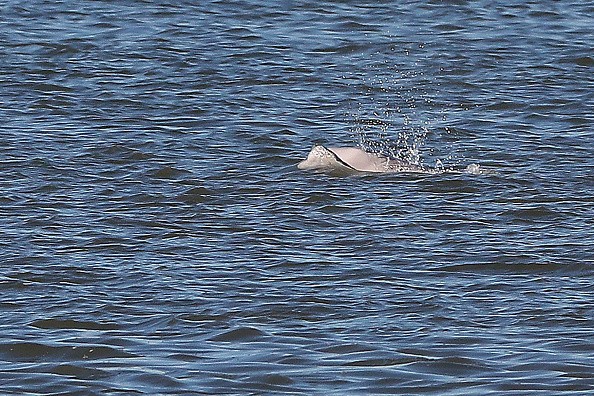Scientists are awaiting to see if a lost narwhal fostered by a pod of beluga whales a few short years ago would mate with them and produce a hybrid animal.
The rare group of cetaceans was discovered in North America's St. Lawrence River in 2016.
The lone male narwhal seems to have been adopted by a pod of belugas and has been traveling with them as if he were one of their own ever since.
Narwhals seldom leave the Arctic, where they can spend up to five months under sea ice.
The lost narwhal joined the beluga whales

According to The Guardian, a drone captured footage of the narwhal swimming and playing with dozens of belugas who were treating it as one of their own, more than 1,000 kilometers outside its normal range.
Because of its long, spiral tusk and mottled grey skin, the narwhal stands out amid the white St. Lawrence River belugas.
Its relatives, on the other hand, don't appear to mind, rubbing up against the narwhal and engaging in sexual activities characteristic among young male whales.
Regardless of the fact that both species are incredibly social, narwhals and belugas rarely interact when they encounter cooler waters.
While adoption across species may be explained for a variety of reasons, scientists are still perplexed by subspecies' adoption.
In a 2018 essay, behavioral ecologist Erin Siracusa speculated that it may be for predator protection, or "safety in numbers," As per Newsweek.
According to Michaud, the narwhal's high level of integration within the group suggests that breeding is a possibility.
There have also been several social contacts between narwhals and beluga whales, including the expected "social-sexual activities in both directions."
To breed, the juvenile narwhal must approach near enough to the other males in the pod to form a coalition, according to Michaud.
Also Read : Researchers Detected Traces of Microplastics in Beluga Whale's Stomach, as Proof of Worsening Contamination
Narlugas skull found in Greenland
Robert Michaud, president and scientific director of the Group for Research and Education on Marine Mammals (GREMM), has been researching whales for more than 35 years, as per CBC.
He stated that the name narluga is a popular portmanteau rather than a scientific phrase and that while scientists cannot predict whether or not a successful mating would occur in this scenario, it is possible.
Michaud stated that while there have been reports of narlugas over the years, actual proof came in 2019 from DNA analysis of a skull undertaken by the University of Copenhagen.
In 1990, a hunter unearthed a narluga skull in Greenland.
It had odd teeth short tusks on the upper jaw and corkscrew-like lower teeth and looked like a cross between a beluga and a narwhal.
When male belugas mate, they establish groups and alliances to approach and court the females, who move in separate pods and care for their babies.
It remains to be seen if that juvenile narwhal will become personal enough with other males to unite in an alliance, a coalition to work its way to reproduction according to Michaud.
Researchers will have to wait for the young to develop before identifying a narluga from a beluga calf if the time comes.
© 2025 NatureWorldNews.com All rights reserved. Do not reproduce without permission.





